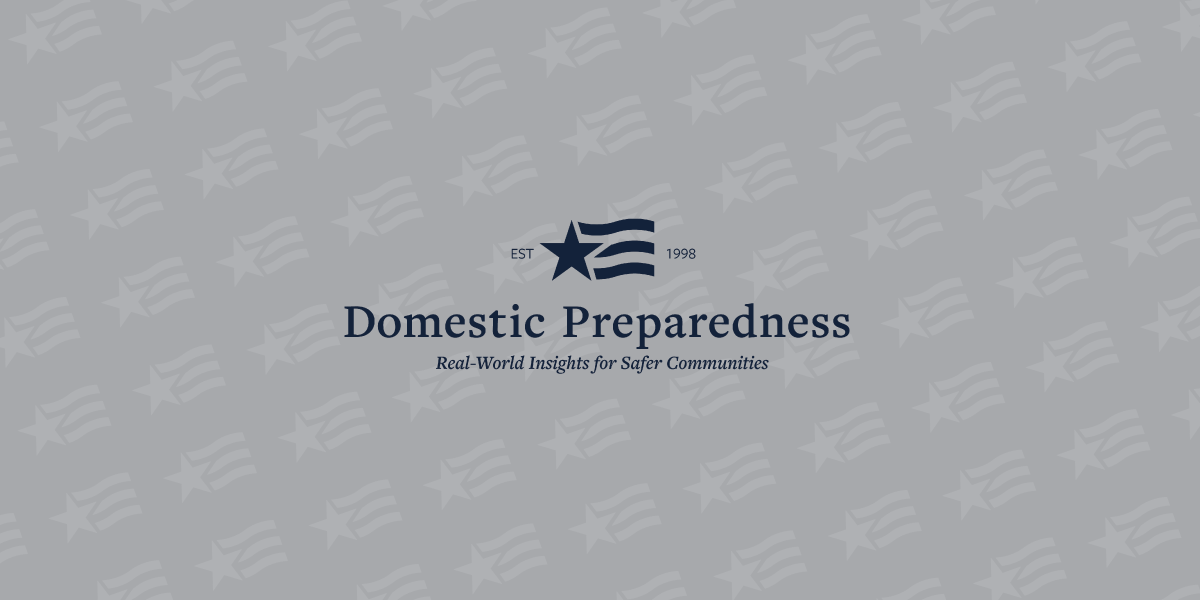- Agriculture & Food Defense, Articles, Emergency Management, Emergency Medical Services, Hospitals, Law Enforcement, Public Health
- Tanya Ferraro
Public health agencies serve valuable roles and fill operational gaps that only they can perform. Planning and training within and between agencies are necessary for public health services to transition from daily operations to emergency response to a widespread pandemic, environmental hazard, or other critical public health threat.
Every agency that carries a responsibility during a disaster requires training, and public health is certainly no exception. The functions of public health are surprisingly vast in a disaster situation. Across the United States, public health agencies have critical roles for dealing with environmental hazards, water and sewer contamination, disease outbreaks, mass fatalities, and many additional responsibilities.
Leading & Supporting Roles in Disaster
With increasing frequency, public health agencies are finding themselves as the subject matter experts in various areas, and their emergency response partner agencies are taking notice of their pivotal roles in disaster. Occasionally, public health is the lead agency in disaster, with examples including the most recent Ebola and measles outbreaks. At other times, public health plays a supporting role in many other ways. In order to seamlessly incorporate public health into a disaster response, adequate training remains at the forefront of preparedness, both inside the agency, and with outside agencies.
Training inside the walls of public health is often meant to fit all potential responses. This means that, although each disease or outbreak treatment may be different from the next, the response is essentially the same. Therefore, public health is able to train on their specific needs for the response, and fill in the details as needed. When employees from public health or other agencies are trained in the Incident Command System, the structures and positions filled are applicable to a multitude of disasters. Because the response structure essentially remains the same for each disaster, it is imperative that the training inside public health be consistent and frequent in the principles shared by other response partners. This is most successfully accomplished by identifying, training, and exercising with local first responders and other agencies involved in emergency management.
One of the most essential elements in an effective public health emergency response is the ability to train staff and leadership on how to make the critical switch from daily operations to emergency operations. This process is not successful by training in all topics all the time, but by creating realistic and operationally sound training plans that allow staff to identify areas that require their expertise on a daily basis. Identifying where daily public health responsibilities fit into the incident command structure and emergency operations plan allows staff to make sense of the emergency responsibilities they will inevitably be given. Incorporating training and exercises, which put into practice lessons that would otherwise be lost in a room, builds upon the elements learned to foster advanced skills out of introduction.
Multifaceted Planning & Training
Developing relevant training plans begins with identifying areas most in need of those plans and relaying those reasons to the staff members who will receive the training. Once they understand why they are receiving training, connecting their unique daily roles to their emergency roles becomes more palpable and purposeful. The “what” that is completed does not always change, but the “how,” “where,” “why,” and “who” to report to certainly do, and these are the questions that introductory-level training should eventually expound on to prepare staff for response.
One such type of training is for a point of dispensing (POD), which is a site where medications are distributed to a large group of people. A POD includes more elements than where to host a site and how to open it. There is a structure with many roles – documentation, nursing, consultation, logistics, resource management, security, public information, and more – that include the management principles of incident command learned in introductory training. The practical skills of a specific role – for example, that of a public health nurse – may be the same as his or her everyday responsibilities, such as giving injectable vaccines. Although the systems, reporting, documentation, safety, and location of PODs may differ, exercising the roles in advance can greatly reduce errors, increase comfort, and ultimately increase efficiency.
During a large-scale planned event, there may be environmental factors that arise related to drinking water, sewage, or other areas of environmental health expertise. Public health recommendations and the way agencies complete testing may be the same as any regular day, but who needs to know about it, how it is documented, and who leadership should share information with are part of the transition from routine to response mode. The same training that prepares public health to change their mindset for a POD also prepares them to work in an influenza clinic, emergency testing site, or even a call center as subject matter experts. The same incident command training that discusses the organizational layout for leadership in a POD is applicable to an environmental health disaster.
The list of training and its cross-references are endless throughout the many facets of public health and potential response areas. As the only resource for many functions in disaster, it is imperative to keep training as a priority for public health. Creating robust training and exercise plans that are rooted in necessity help to: build upon skills as they are continuously taught; identify routine functions and how they can be completed in any disaster; and incorporate partner agencies. Such training and planning are how public health can be most successful during routine and disaster situations.

Tanya Ferraro
Tanya Ferraro is the training and exercise coordinator for the Fairfax County Health Department. Since 2007, she has worked in various facets of emergency management, including public information, training, volunteer management, and social media. She is co-host of the emergency management podcast EMtalk and enjoys creating preparedness-related memes and songs for colleagues and community members alike. She studied public safety, emergency management, and homeland security at Bluefield College and is a certified hospital emergency coordinator. Connect with her at about.me/tjlasagna
- Tanya Ferrarohttps://domprep.com/author/tanya-ferraro
- Tanya Ferrarohttps://domprep.com/author/tanya-ferraro






